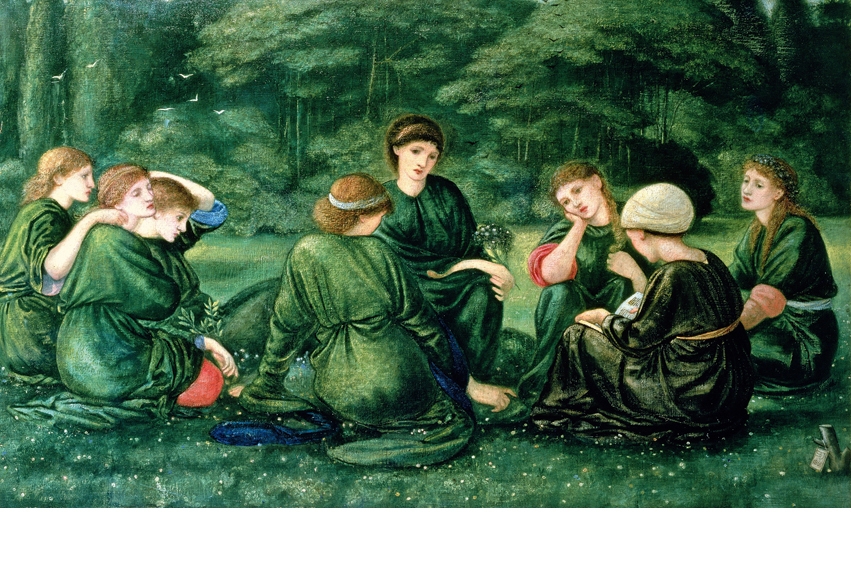Edward Burne-Jones was the archetypal literary-minded Victorian. Born in 1833, the son of a Birmingham picture-framer and gilder, he developed a taste for the Romantic poets while at school. Then, whilst an undergraduate at Oxford, he found a lifelong friend in William Morris. The university was supposed to be their route towards holy orders, but together they converted to the religion of art for art’s sake. Another student friend, Archibald MacLaren, gave Burne-Jones his first artistic break by asking him to provide illustrations for a collection of stories called The Fairy Family.
Why did the Victorians spend so much time away with the fairies? Though Fiona MacCarthy’s subtitle is ‘Edward Burne-Jones and the Victorian Imagination,’ she sticks closely to the traditional cradle-to-grave narrative and subject-centred focus of orthodox biography, offering little in the way of wider context. The encounter with MacLaren’s fairy stories is one of many missed opportunities for excursions into the idiosyncrasies of the Victorian imagination.
MacCarthy is the author of an admirable biography of William Morris, and she offers an excellent account of why these two very different men became such close friends. She is also astute on Burne-Jones’s somewhat two-edged relationship with Dante Gabriel Rossetti and the inner circle of the pre-Raphaelites. She is rather less successful in explaining the charisma, both personal and literary, of the two other formative influences on Burne-Jones’s imagination: the brooding critic John Ruskin and the flame-haired poet Algernon Charles Swinburne.
At the age of 20 Burne-Jones read Ruskin’s The Stones of Venice, which became the bible for the cult of medievalism that contrasted the craftsmanship of old with the alienated labour of industrial modernity. With each new book and each new lecture series over the following 30 years, Ruskin continued to inspire Burne-Jones with his vision of the role of the creative artist in saving a society that was becoming rotten.








Comments
Join the debate for just £1 a month
Be part of the conversation with other Spectator readers by getting your first three months for £3.
UNLOCK ACCESS Just £1 a monthAlready a subscriber? Log in